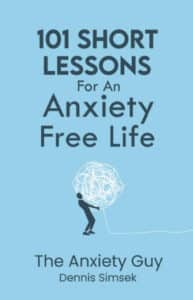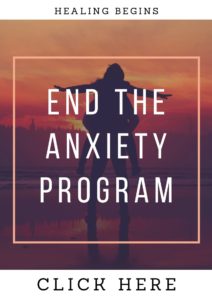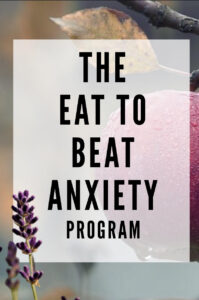“The Spirit Always Knows What To Do To Heal Itself. The Challenge Is To Silence The Mind.”
Science has proven that anxious thoughts lead to anxiety. After the thoughts have been thought about, a part of the anxiety remains and the associated hormones take time to eventually disappear.
Anxiety follows a snowball effect pattern. This means that the hormones will keep on adding as long as the anxiety inducing train of thought is being followed. The cumulative effect of anxiety is generally dependent on the intensity and quantity of the belief that is put into the specific thought or thoughts.
When following the above mentioned process, the person is not only creating an effect on short-term stress, but he/she is also conditioning themselves for the longer duration. When the same negative thought is being thought of on a frequent basis, then it will only cause the conditioning towards it to keep on becoming worse. Thus, eventually, the person will become stressed or anxious a lot more with greater intensity in a lesser time period. This is the manner in which varied phobias form.
 There is increased addition of anxious thoughts due to incorrect thought processes, which results in wrongful conditioning of the mind and body. People usually get entrapped in negative patterns of thinking if they have increasing faith in the specific thought or thoughts. Also if they have sufficient spare time which is not taken up by vital tasks such as making a living or surviving.
There is increased addition of anxious thoughts due to incorrect thought processes, which results in wrongful conditioning of the mind and body. People usually get entrapped in negative patterns of thinking if they have increasing faith in the specific thought or thoughts. Also if they have sufficient spare time which is not taken up by vital tasks such as making a living or surviving.
As compared to our ancestors, our lives are much easier. There is increased spare time nowadays, which we often use to condition our mind and body in the incorrect manner. The section of the brain where such thoughts percolate is often the default mode network (DMN). This brain area is also referred to as the ‘negative task network’ because it tends to shut down whenever there is a proper task that needs to be done.
This is the point where one can understand the science of connection between meditation and anxiety. Meditation is something which causes the default mode network to cease by offering us a new task, i.e., focusing on the objective task of meditation. The process of meditation also plays a major role in stopping your belief in the particular thought or thoughts.
The benefits of guided meditation for fear and anxiety are endless. You’ll be training your mind to head in a new direction, a direction focused on your mental health and well being. Rather than heightening your fight or flight response, and adding fear to fear, you will tame that side of you in a short time.
Also remember that it’s vitally important that you set a regular schedule as to when you’ll do your guided meditations. This will keep you focused, and momentum will be on your side. The one who randomly use the natural tools given to us to counter fear and anxiety, are the ones who are lost and confused.
Persistence is power. The more you persist in the face of your setback, your fears, your critical voice. The sooner you’ll be free of your self defeating self talk.
Take into consideration also that you’ll need to wear headphones during your meditation sessions. As well, you’ll need to find yourself a quiet place to either sit, or lay down. This will give you the greatest benefits through the session.
HERE is a fantastic guided meditation for anxiety session you can begin doing today
People who have practiced meditation for a sufficient period of time will understand that stoppages in belief patterns in some thought is due to the fact that they tend to be impersonal. Thoughts usually spring from impersonal conditionings of the mind, conditioning which is not really desired by the practical self.
Meditation alters such negative conditioning by turning the focus of anxiety in a better manner, and disconnecting the ‘sensations’ section of anxiety stored in the brain’s Amygdala from the discomfort that arises out of the Anterior cingulate cortex. Anxiety is instinctively perceived by all as simple bad sensations; it is however a neutral instruction which is generally bound to the ‘unpleasant’ and ‘discomfort’ centre of the brain.
It is therefore important to know that in addition to the anxiety, the thought, and the defense mechanism, there is also the thinking time, the specific thought, the belief about its truth and severity, the anxiety sensations and feelings, the discomfort linked to those sensations, the conditioning.
The science between meditation and anxiety is thus simple to understand
but accomplishing the task is not that easy. Anxiety sufferers need to slowly chip away at years of negative conditioning not by avoiding the irrational thoughts, but by purposely thinking about it and simultaneously avoid falling into the trap of trailing the typical negative train of thought.
The focus should instead be mindfully on the sensations of anxiety, which are impersonal, while also accepting such incorrect sensations. The desire for the sensations to cease is what joins the anxiety feelings to the unpleasantness and discomfort associated with anxiousness.
Ready To Begin Your Natural Recovery Past Anxiety?
Learn More About The End The Anxiety Program Today.



















